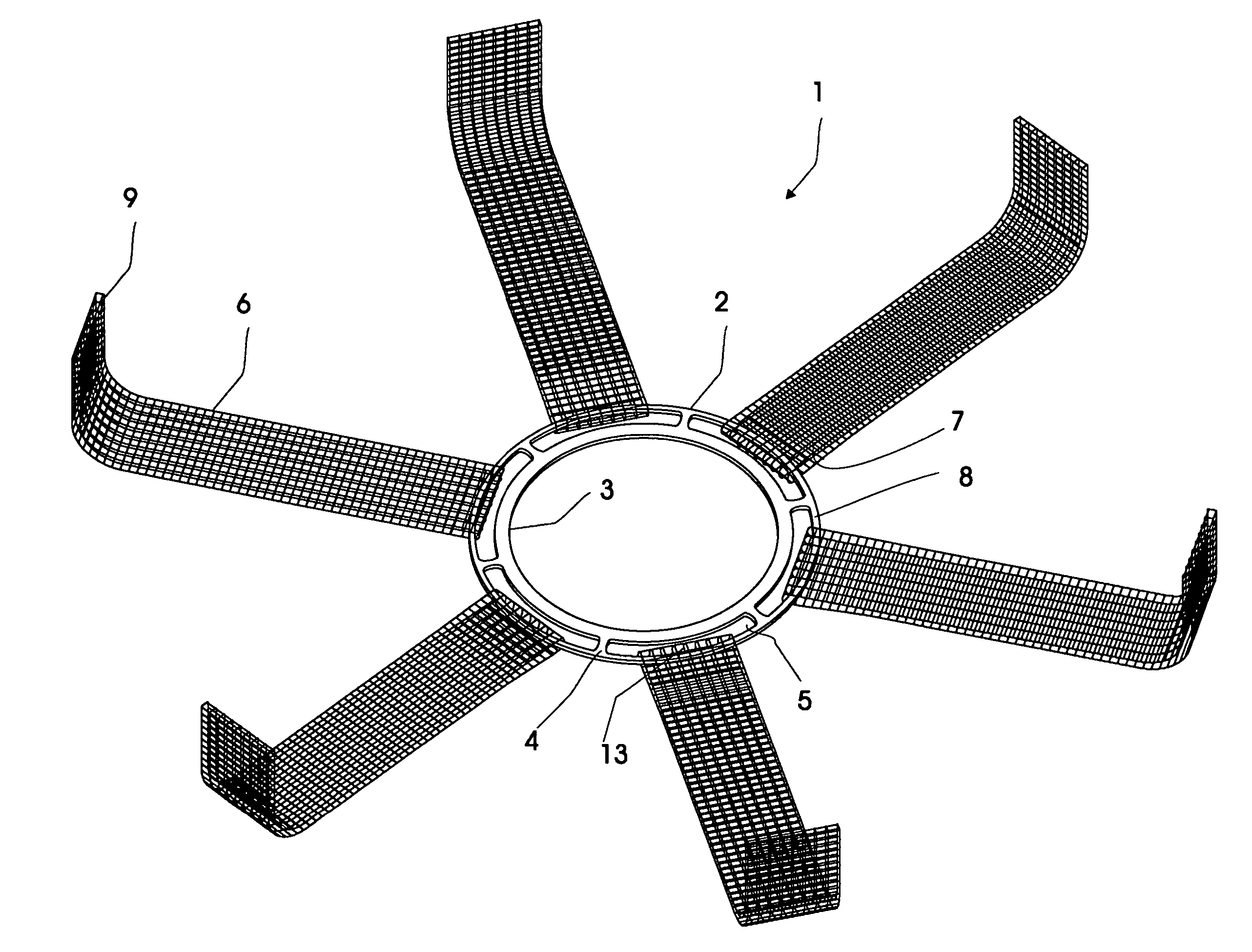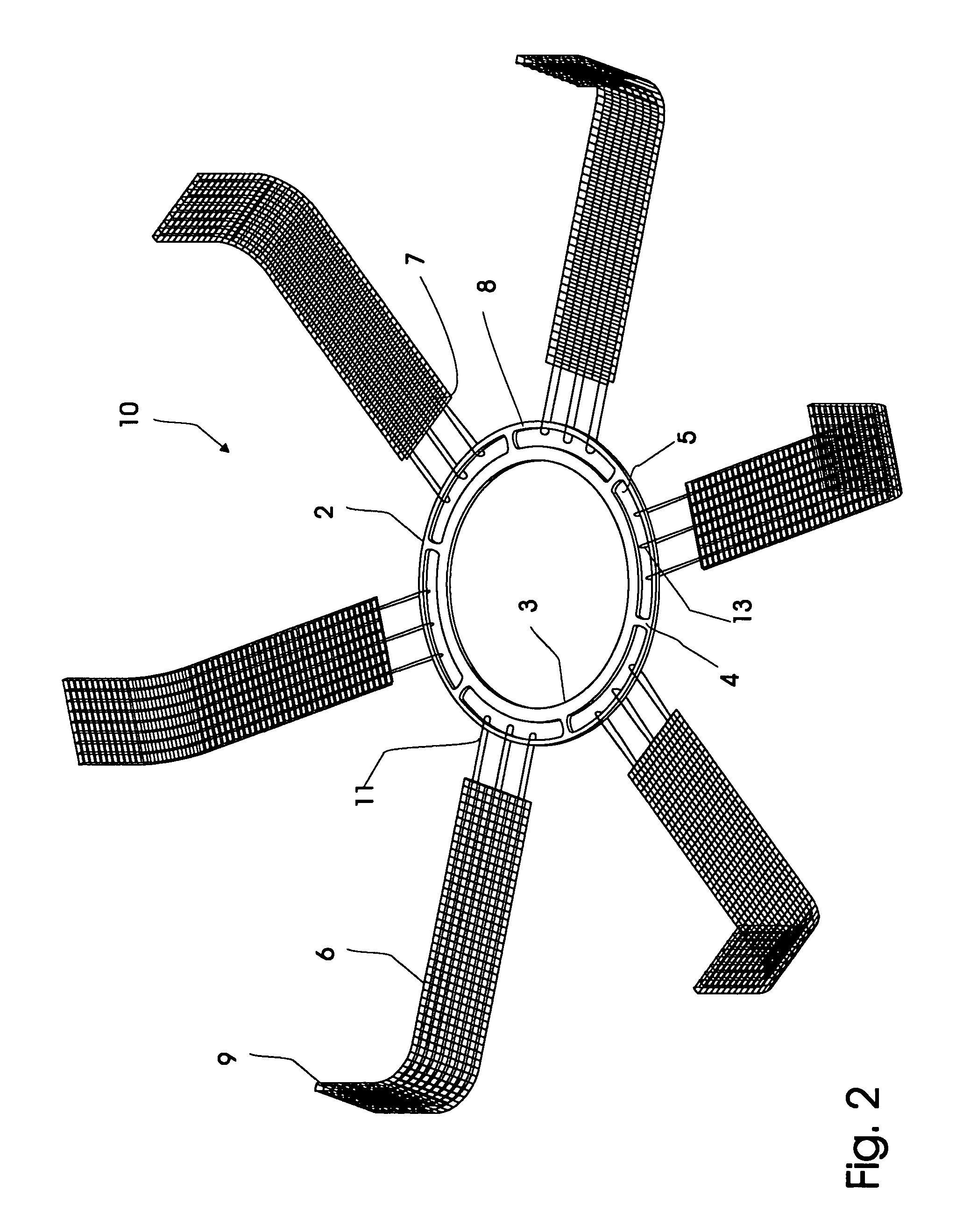Method for prevention of a parastomal hernia in a patient
a parastomal hernia and patient technology, applied in the field of patient parastomal hernia prevention, can solve the problems of inconvenient manufacturing, inconvenient operation, and inability to carry out laparotomy, and achieve the effects of reducing the risk of infection and inflamation, and being convenient to manufactur
- Summary
- Abstract
- Description
- Claims
- Application Information
AI Technical Summary
Benefits of technology
Problems solved by technology
Method used
Image
Examples
examples
[0053]The following example illustrate the most preferred embodiments and the tests conducted to confirm their utility.
Pilot Study
Materials
[0054]Implants according to the embodiment of FIG. 4 with six anchoring means were obtained from Medic House A / S, Østre Havnevej 31, Svendborg, Denmark. The implants were laser cut from polypropylen mesh sheets. The width of the ring was 2 cm. The distance from the centre of the ring to the free end of the anchoring means was 6 cm.
Patients
[0055]A total of 25 patients (15 male) with median age of 71 years (range 39-93) who were scheduled for elective surgery for rectosigmoidal cancer and with a high probability for a permanent end-colostomy, were included in the study. Patients who had inflammatory bowel disease, a known immunodeficiency disease, a mechanical cardiac valve, American Society of Anaesthesiology (ASA) class IV-V or had a short expected survival after surgery were not included in the study. Risk factors for development of parastomal h...
PUM
 Login to View More
Login to View More Abstract
Description
Claims
Application Information
 Login to View More
Login to View More - R&D
- Intellectual Property
- Life Sciences
- Materials
- Tech Scout
- Unparalleled Data Quality
- Higher Quality Content
- 60% Fewer Hallucinations
Browse by: Latest US Patents, China's latest patents, Technical Efficacy Thesaurus, Application Domain, Technology Topic, Popular Technical Reports.
© 2025 PatSnap. All rights reserved.Legal|Privacy policy|Modern Slavery Act Transparency Statement|Sitemap|About US| Contact US: help@patsnap.com



